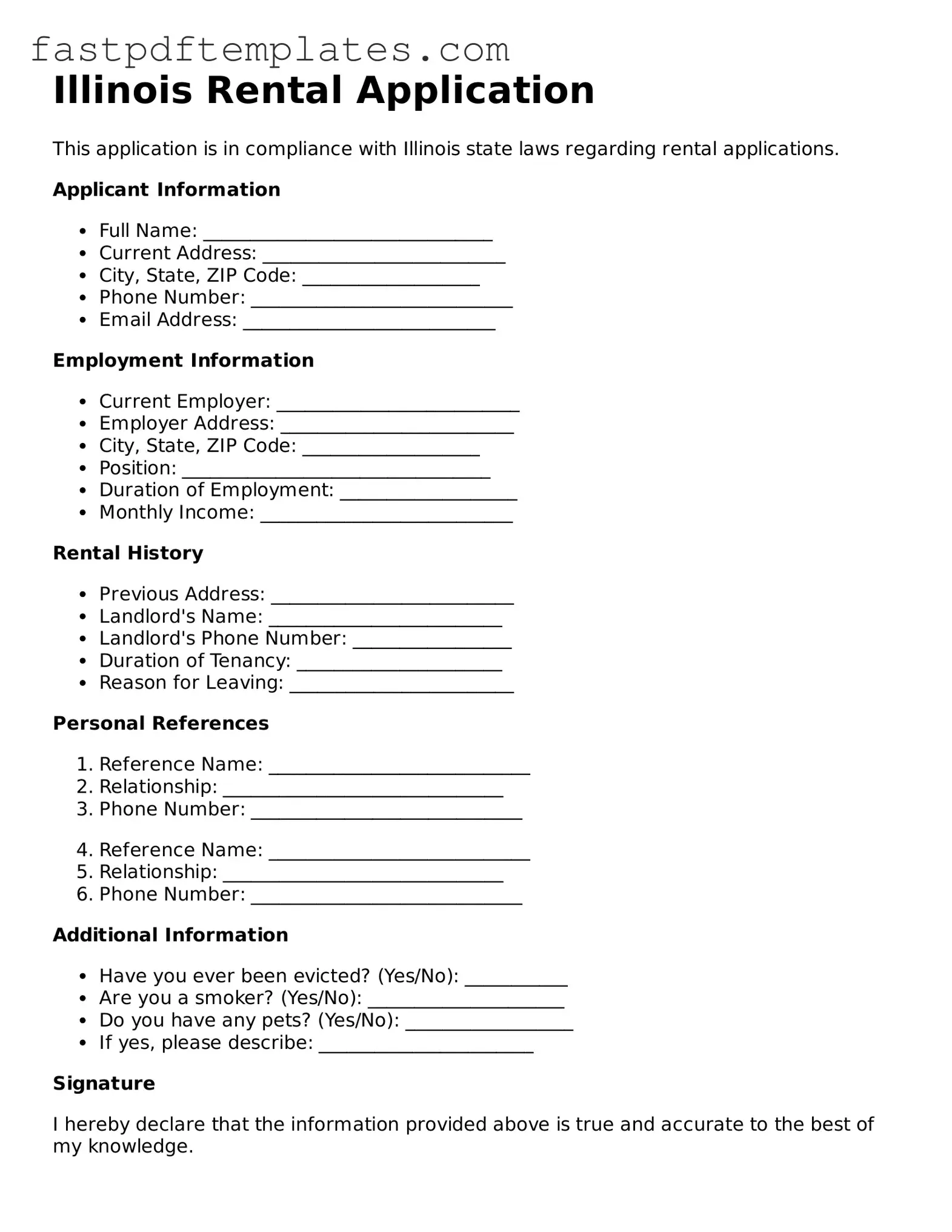The Illinois Rental Application form shares similarities with the standard lease agreement. Both documents serve to establish the terms and conditions of a rental arrangement. While the rental application focuses on gathering personal and financial information from prospective tenants, the lease agreement outlines the rights and responsibilities of both landlords and tenants. Both documents require signatures to indicate mutual consent, and they often contain provisions related to rental payments, duration of tenancy, and property maintenance obligations.
Another document comparable to the Illinois Rental Application is the tenant screening form. This form is often used by landlords to assess the suitability of potential tenants. Like the rental application, it collects detailed information about the applicant's rental history, employment status, and creditworthiness. The tenant screening form may also include authorization for background checks, which is crucial for landlords in making informed decisions about who to rent to.
The credit application form is also similar to the Illinois Rental Application. This document is specifically designed to evaluate an applicant's creditworthiness. It requires information such as Social Security numbers, income details, and outstanding debts. Both forms aim to provide landlords with a comprehensive view of an applicant’s financial background, helping them to mitigate the risk of renting to individuals who may struggle to meet their financial obligations.
The employment verification form aligns closely with the rental application as well. This document is used to confirm an applicant's employment status and income level. Landlords often require this information to ensure that potential tenants have a reliable source of income to cover rent payments. Both forms emphasize the importance of financial stability in the rental decision-making process.
The background check authorization form is another document that complements the Illinois Rental Application. This form gives landlords permission to conduct background checks on applicants, which may include criminal history, credit reports, and rental history. Both documents aim to protect landlords from potential risks associated with renting to individuals who may have problematic backgrounds.
The pet application form is relevant for landlords who allow pets on their properties. Similar to the rental application, this document collects information about the applicant’s pet, including breed, size, and vaccination history. It helps landlords assess any potential risks or liabilities associated with allowing pets, ensuring that they make informed decisions regarding their rental policies.
The rental history verification form is also akin to the Illinois Rental Application. This document is used to confirm the rental history provided by the applicant. It typically includes contact information for previous landlords, allowing landlords to verify the applicant's past rental behavior. Both forms help establish the reliability and trustworthiness of potential tenants.
The co-signer application form is similar in that it provides information about a third party who may guarantee the lease. This document is essential for applicants who may not meet all the financial criteria on their own. It collects similar information as the rental application, including financial details and personal references, ensuring that the co-signer is also a suitable candidate.
Lastly, the roommate agreement form bears resemblance to the Illinois Rental Application, particularly in shared living situations. This document outlines the responsibilities and expectations of each roommate. It often includes terms regarding rent payment, utilities, and shared spaces. Both documents aim to establish clear communication and agreement among all parties involved in the rental arrangement.
